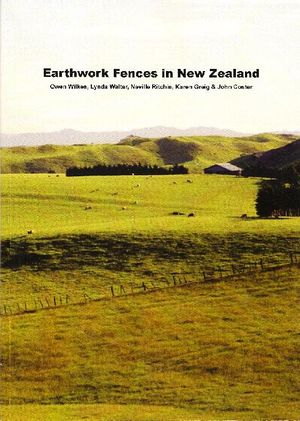Difference between revisions of "Earthwork Fences in New Zealand"
| Line 5: | Line 5: | ||
Available from the society, PO Box 203 Whakatane, 3158. ISBN 1 86940 315 0 | Available from the society, PO Box 203 Whakatane, 3158. ISBN 1 86940 315 0 | ||
| − | The greater part of this memoir is an account of earthwork fences in the Aotea / Kawhia area contributed by [[Wilkes Owen|Owen Wilkes]], analysing their form. locations functions and dates. It includes a gazetteer of the sites. The remaining authors have contributed an introduction, which places the sites | + | The greater part of this memoir is an account of earthwork fences in the Aotea / Kawhia area contributed by [[Wilkes Owen|Owen Wilkes]], analysing their form. locations, functions and dates. It includes a gazetteer of the sites. The remaining authors have contributed an introduction, which places the sites considered by Wilkes in a national context and have undertaken light editing on the Wilkes report, which was originally intended only as a site record supplement. |
[[Category:Books]][[Category:2012_Books]] | [[Category:Books]][[Category:2012_Books]] | ||
[[Category:Waikato]] | [[Category:Waikato]] | ||
Revision as of 13:46, 17 July 2012
Earthwork Fences in New Zealand
Owen Wiles, Lynda Walter, Neville Richie, Karen Greig and John Coster. 2012. Memoir 11, Whakatane and District Historical Society. 43ppAvailable from the society, PO Box 203 Whakatane, 3158. ISBN 1 86940 315 0
The greater part of this memoir is an account of earthwork fences in the Aotea / Kawhia area contributed by Owen Wilkes, analysing their form. locations, functions and dates. It includes a gazetteer of the sites. The remaining authors have contributed an introduction, which places the sites considered by Wilkes in a national context and have undertaken light editing on the Wilkes report, which was originally intended only as a site record supplement.
